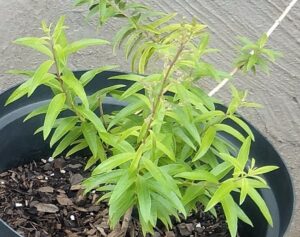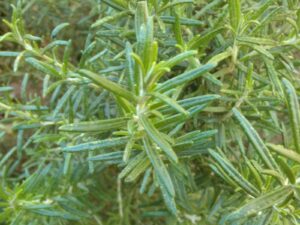Thyme is a wonderful herb that adds flavor, fragrance, and visual appeal to your garden and kitchen. It’s a perennial that belongs to the mint family and comes in a myriad of varieties. The foliage is usually green or gray-green, but you may encounter yellow, red, or silver-colored leaves.

Umbrella Palm
Umbrella palm can add a tropical flair to any garden or indoor space. It’s a grass-like plant that has long



